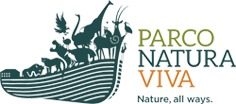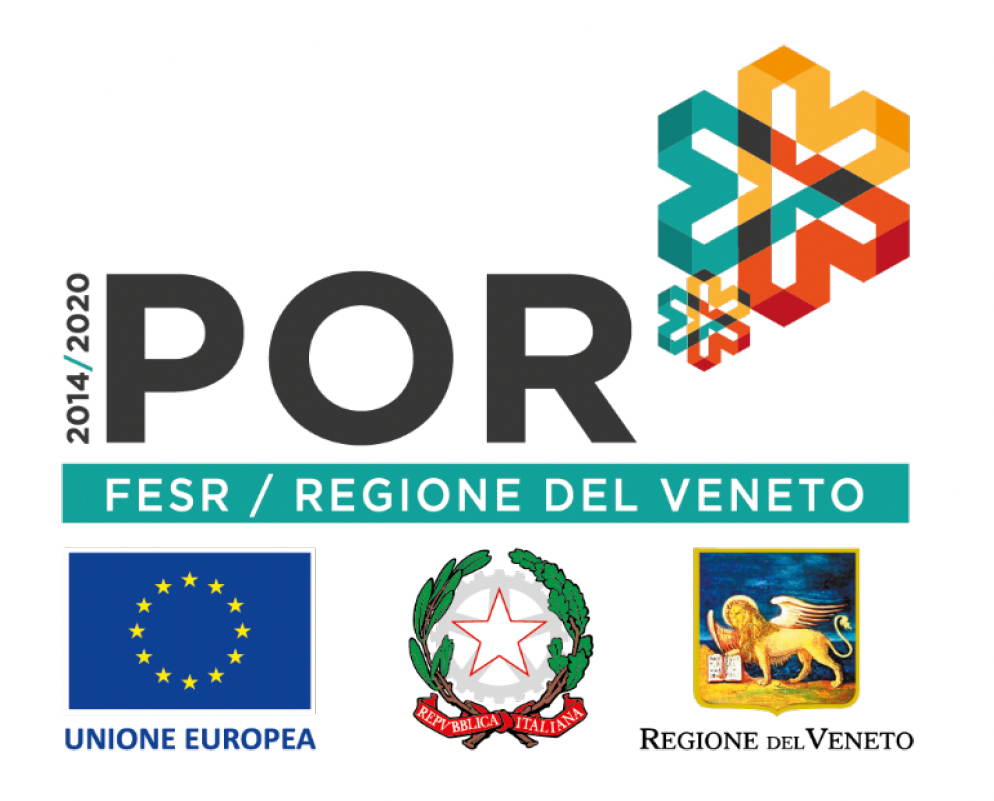Plenary speakers
ADRIAN ALDEA
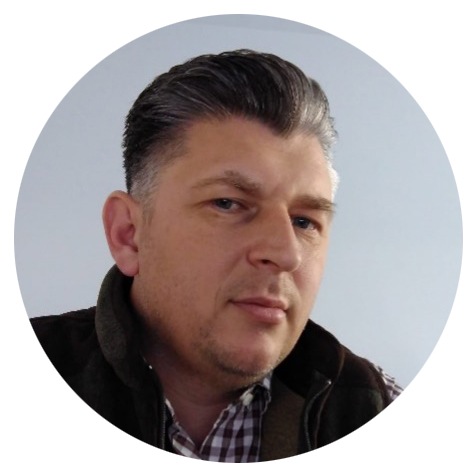
The Speaker
Adrian Aldea graduated in Ecology and Environmental Protection at the University Lucian Blaga and Wildlife Management at the Transylvania University in Brasov. He has been working in the environmental sector for the past 20 years. While worked as a field officer for the Romanian Environmental Guard, which included checking and solving environmental problems in the field, he also developed a close cooperation with various conservation NGOs. In 2019 he joined the team of Foundation Conservation Carpathia as wildlife management director and coordinates the reintroduction programmes of bison and beavers in the Southern Fagaras Mountains.
The Abstract
„Făgăraș mountains become home for European bison”
Foundation Conservation Carpathia (FCC) was created in 2009 by 12 philanthropists and conservationists to stop illegal logging and to preserve a large area of Carpathian Forest as a fully protected area for future generations.
Our vision is to create a world-class protected wilderness area in the southern Romanian Carpathians, an example of conservation in Europe and the most emblematic national park on the continent. The project includes the Făgăraș Mountains Natura 2000 site, Piatra Craiului National Park and Leaota Mountains, making a total of over 250,000 ha.
The Carpathia project works along the six principle directions: land conservation, restoring nature, wildlife protection, support for local communities, development of a new green economy, telling our story.
Bison, beavers and some other species were extinct in the Fagaras Mountains during the last centuries. From 2019 we have developed a bison and beaver reintroduction programme and brought the first animals back to the area.
For the reintroduction of European bison we have chosen three areas where we have fenced over 100 ha to adapt the animals to life in the wild. In the autumn of 2019 we brought the first animals which were released in 2020 early spring. So far we have released 56 animals in the 3 areas and registered 15 free-born calves.
Given the low genetic variability within this species, selection of animals is very important. For this we analyse the pedigree book of the species and looking for collaborations with various breeders in Europe.
After release we use various monitoring techniques (GPS collars, wildlife cameras, direct observations) that allow us to know how the free bison have adapted to the new living conditions, how they establish their home range and the interaction with the native wildlife species.
Our vision is to create a world-class protected wilderness area in the southern Romanian Carpathians, an example of conservation in Europe and the most emblematic national park on the continent. The project includes the Făgăraș Mountains Natura 2000 site, Piatra Craiului National Park and Leaota Mountains, making a total of over 250,000 ha.
The Carpathia project works along the six principle directions: land conservation, restoring nature, wildlife protection, support for local communities, development of a new green economy, telling our story.
Bison, beavers and some other species were extinct in the Fagaras Mountains during the last centuries. From 2019 we have developed a bison and beaver reintroduction programme and brought the first animals back to the area.
For the reintroduction of European bison we have chosen three areas where we have fenced over 100 ha to adapt the animals to life in the wild. In the autumn of 2019 we brought the first animals which were released in 2020 early spring. So far we have released 56 animals in the 3 areas and registered 15 free-born calves.
Given the low genetic variability within this species, selection of animals is very important. For this we analyse the pedigree book of the species and looking for collaborations with various breeders in Europe.
After release we use various monitoring techniques (GPS collars, wildlife cameras, direct observations) that allow us to know how the free bison have adapted to the new living conditions, how they establish their home range and the interaction with the native wildlife species.
MAURO DELOGU
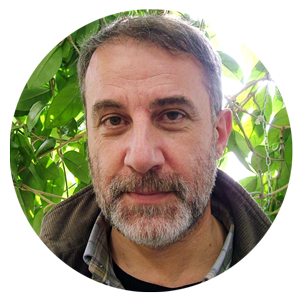
The Speaker
Researcher since 2001 at the University of Bologna (wildlife and exotic animal service) where he is currently Associate Professor, he carries out his research in the field of veterinary medicine. His research interests focus in particular on pathogen ecology, i.e. the complex network of interactions between pathogenic microorganisms and the natural environment. He currently focuses his research on topics such as the management of wild animal populations, including the ecological function of controlling pathogen populations (together with influenza viruses and coronaviruses). He is also involved in supporting numerous conservation projects, through his medical expertise, applied to wildlife.
The Abstract
How invasive species can affect conservation: bioecological aspects from diseases to populations
The climate change taking place in the Anthropocene has affected a large part of the ecosystems of Planet Earth, altering environments in which it has often induced an alteration, taking some species well beyond certain adaptive limits set by evolution, biogeographically designating limits both to the distribution of species and their consistency. The high level of human activity and mobility on the planet currently has favored some species that have been relocated outside their original biomes and found themselves in favorable environments. These species have expanded their populations, often to the point of exceeding those of their territories of origin (IAS) and have shown significant demographic increases. They have reached new carrying capacities in the environment induced by anthropic activity, including agricultural activity. In this scenario, species with a R reproductive strategy have shown real demographic explosions in various territories. Suidae (Sus scrofa) and Rodents (Myocastor) are examples of this phenomenon which consequently offers new trophic opportunities to some pathogens. After having implemented their consistency in domestic reservoir species (see Avian influenza, Coronavirus swine fever, WND), these pathogens are able to exploit this new trophic opportunity in nature. The climate change has become the driver and one of the main factors influencing the distribution and consistency of certain species, both animal and plant. It becomes fundamental in feasibility projects, which accompany conservation actions (restoration, captive breeding) to consider that, at the same time, even some pathogens are conditioned by the new carrying capacity offered to them in the Anthropocene. It is from this type of perspective, using the natural resilience factors that already exist in ecosystems, that the LIFE Green4 Blue project was developed.
The climate change taking place in the Anthropocene has affected a large part of the ecosystems of Planet Earth, altering environments in which it has often induced an alteration, taking some species well beyond certain adaptive limits set by evolution, biogeographically designating limits both to the distribution of species and their consistency. The high level of human activity and mobility on the planet currently has favored some species that have been relocated outside their original biomes and found themselves in favorable environments. These species have expanded their populations, often to the point of exceeding those of their territories of origin (IAS) and have shown significant demographic increases. They have reached new carrying capacities in the environment induced by anthropic activity, including agricultural activity. In this scenario, species with a R reproductive strategy have shown real demographic explosions in various territories. Suidae (Sus scrofa) and Rodents (Myocastor) are examples of this phenomenon which consequently offers new trophic opportunities to some pathogens. After having implemented their consistency in domestic reservoir species (see Avian influenza, Coronavirus swine fever, WND), these pathogens are able to exploit this new trophic opportunity in nature. The climate change has become the driver and one of the main factors influencing the distribution and consistency of certain species, both animal and plant. It becomes fundamental in feasibility projects, which accompany conservation actions (restoration, captive breeding) to consider that, at the same time, even some pathogens are conditioned by the new carrying capacity offered to them in the Anthropocene. It is from this type of perspective, using the natural resilience factors that already exist in ecosystems, that the LIFE Green4 Blue project was developed.
MARCO GALAVERNI
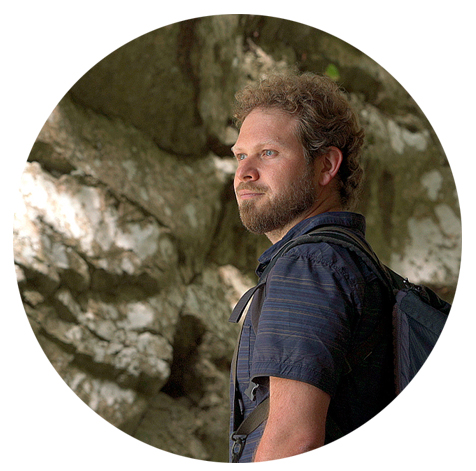
The Speaker
Marco Galaverni has a PhD in Biodiversity and Evolution. He has been studying wolves in Italy and across the world for over 15 years, with dozens of published scientific papers. After working as research collaborator at ISPRA (the Italian Institute for Environmental Protection and Research), he is currently the Programme & Oases Director at WWF Italy, while serving for the Italian CITES scientific authority until 2022. He has a passion for scientific dissemination, reflected on popular science books, TV and radio shows.
The Abstract
Where are the sapiens? Across mass extinctions, global biodiversity frameworks and how to save our life on the Planet
Global biodiversity is plummeting at an unprecedented pace in human history: in the last 50 years, vertebrate populations declined on average by 69% and 1 million species are estimated to face the risk of extinction, while most bio-physical planetary boundaries have been transgressed. The Global Biodiversity Framework recently adopted by the United Nations is a masterpiece of commitments that need to be followed by concrete actions.
Reinforcement and rewilding projects can play a primary role for the conservation of keystone species. We will thus explore case studies from Italian biodiversity, ranging from the Eurasian lynx to the endemic Italian red deer to the Bonelli’s eagle, while an ecosystem restoration approach must also be pursued in order to obtain results at scale. However, conservation efforts alone are projected not to be sufficient: will humanity be able to modify its paradigms and reduce its global footprint in order to revert biodiversity loss and climate change? Recent public debates and negationism revival are worrisome, but increased education efforts and public activism can be the key to overcome this uncertainty and lead us through the ecological transition towards a more balanced future.
Reinforcement and rewilding projects can play a primary role for the conservation of keystone species. We will thus explore case studies from Italian biodiversity, ranging from the Eurasian lynx to the endemic Italian red deer to the Bonelli’s eagle, while an ecosystem restoration approach must also be pursued in order to obtain results at scale. However, conservation efforts alone are projected not to be sufficient: will humanity be able to modify its paradigms and reduce its global footprint in order to revert biodiversity loss and climate change? Recent public debates and negationism revival are worrisome, but increased education efforts and public activism can be the key to overcome this uncertainty and lead us through the ecological transition towards a more balanced future.
CRISTINA GIACOMA
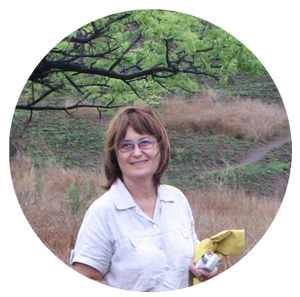
The Speaker
The Abstract
Can researchers be a driver of sustainable development for local communities? The case of the Maromizaha NPA, in Madagascar.
Cristina Giacoma1, Valeria Torti1, Chiara De Gregorio1, Rose Marie Randrianarison2, Jonah Ratsimbazafy2, Caterina Spiezio3, Tommaso Sandri4, Daria Valente1, Gabriele L. Beccaro5, Marco Gamba1, Cesare Avesani Zaborra3,4
1 Università di Torino – Department of Life Sciences and Systems Biology (DBIOS), Turin, Italy
2 Groupe d’Étude et de Recherche sur les Primates de Madagascar (GERP), Antananarivo, Madagascar
3 Parco Natura Viva – Garda Zoological Park, Bussolengo, Italy
4 Fondazione A.R.C.A. , Bussolengo, Italy
5 Università di Torino – Department of Agricultural, Forest and Food Sciences (DISAFA), Turin, Italy
To preserve a truly unique biodiversity hotspot like Madagascar, as well as to ensure well-being and prosperity among the local populations, innovative, community-based and scalable approaches to conservation are fundamental. Concerns about global decline in biodiversity and degradation of ecosystem services, that gave rise in 1992 to the Convention on Biological Diversity, have now been addressed by the 2030 Agenda for Sustainable Development. From 2008 the University of Torino (UniTO), together with Parco Natura Viva, is promoting research, education, capacity building and training in the Maromizaha New Protected Area, a natural hotspot in eastern Madagascar managed by GERP (Groupe d’Étude et de Recherche sur les Primates de Madagascar). The project aims at empowering and engaging local communities in initiatives to protect lemurs and their habitats. PNV and its foundation, Fondazione A.R.C.A. act cooperatively to alleviate poverty in the rural community, by creating income-generating activities, thus reducing the human pressure on the forest itself. This presentation will show the good practices and lessons learnt from our long-term conservation project and analyse the contribution of the multidisciplinary approach adopted to the achievement of the 17 UN Sustainable Development Goals (SDGs). Overall, our actions targeted 12 out of 17 SDGs, with more than 30 partners involved and more than 20 funded projects. We specifically evaluated which parameters can work out as a proxy of long-term impacts and defined our strengths, weaknesses and limits, to help us in increasing the efficacy of future interventions in the area.
Cristina Giacoma1, Valeria Torti1, Chiara De Gregorio1, Rose Marie Randrianarison2, Jonah Ratsimbazafy2, Caterina Spiezio3, Tommaso Sandri4, Daria Valente1, Gabriele L. Beccaro5, Marco Gamba1, Cesare Avesani Zaborra3,4
1 Università di Torino – Department of Life Sciences and Systems Biology (DBIOS), Turin, Italy
2 Groupe d’Étude et de Recherche sur les Primates de Madagascar (GERP), Antananarivo, Madagascar
3 Parco Natura Viva – Garda Zoological Park, Bussolengo, Italy
4 Fondazione A.R.C.A. , Bussolengo, Italy
5 Università di Torino – Department of Agricultural, Forest and Food Sciences (DISAFA), Turin, Italy
To preserve a truly unique biodiversity hotspot like Madagascar, as well as to ensure well-being and prosperity among the local populations, innovative, community-based and scalable approaches to conservation are fundamental. Concerns about global decline in biodiversity and degradation of ecosystem services, that gave rise in 1992 to the Convention on Biological Diversity, have now been addressed by the 2030 Agenda for Sustainable Development. From 2008 the University of Torino (UniTO), together with Parco Natura Viva, is promoting research, education, capacity building and training in the Maromizaha New Protected Area, a natural hotspot in eastern Madagascar managed by GERP (Groupe d’Étude et de Recherche sur les Primates de Madagascar). The project aims at empowering and engaging local communities in initiatives to protect lemurs and their habitats. PNV and its foundation, Fondazione A.R.C.A. act cooperatively to alleviate poverty in the rural community, by creating income-generating activities, thus reducing the human pressure on the forest itself. This presentation will show the good practices and lessons learnt from our long-term conservation project and analyse the contribution of the multidisciplinary approach adopted to the achievement of the 17 UN Sustainable Development Goals (SDGs). Overall, our actions targeted 12 out of 17 SDGs, with more than 30 partners involved and more than 20 funded projects. We specifically evaluated which parameters can work out as a proxy of long-term impacts and defined our strengths, weaknesses and limits, to help us in increasing the efficacy of future interventions in the area.
JANNO WEERMAN
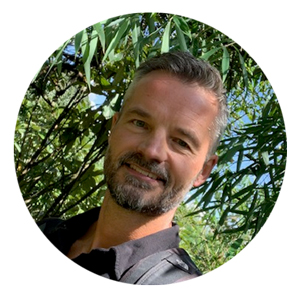
The Speaker
Working in Rotterdam Zoo since 1998. Started as a zookeeper and worked with different taxonomic groups and in different position in the Zoo. My current position is Head Living Collection. Besides this I am the EEP coordinator and GSMP convener for the Red Panda, EEP coordinator Tufted Deer and Vice-Chair Small Carnivore TAG.
The Abstract
Research, community-based conservation efforts and augmentation program of the red panda (Ailurus fulgens)
Red panda is an endangered species from the Himalayan range. The red panda is under treat because of habitat loss, fragmentation and poaching. The good news is that there are joint efforts to protect the red panda and their habitat. Even an augmentation program, ‘back to the wild’ is in place in Singalila NP. All efforts to protect red panda and their habitat is done according to the IUCN One Plan approach. Scientist, NGO’s, governments, zoos and last but certainly not least the local community are working together to save this species from extinction.
Red panda is an endangered species from the Himalayan range. The red panda is under treat because of habitat loss, fragmentation and poaching. The good news is that there are joint efforts to protect the red panda and their habitat. Even an augmentation program, ‘back to the wild’ is in place in Singalila NP. All efforts to protect red panda and their habitat is done according to the IUCN One Plan approach. Scientist, NGO’s, governments, zoos and last but certainly not least the local community are working together to save this species from extinction.
Invited Talk Speakers
ALEXANDRU BULACU
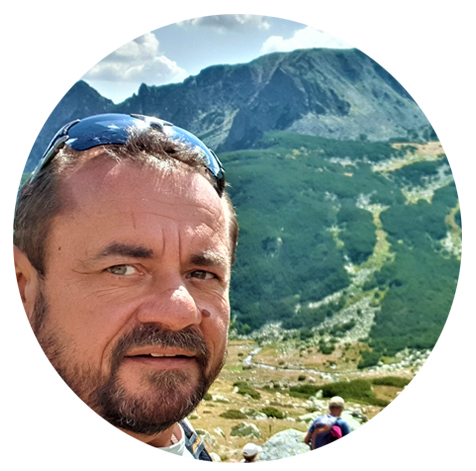
The Speaker
Graduate of the Faculty of Psycho-sociology of the University of Petroșani - 2006, of the Faculty of Medicine, Pharmacy and Dentistry of the Western University "Vasile Goldiș" in Arad -2009, graduate of the master's program, Hospitality and Tourism Management, at the University of Petroșani - 2009.
For more than 23 years volunteer in the development of management plans in protected natural areas in Romania, their implementation, secretary and president for 20 years in the Advisory Board of Retezat National Park, the oldest national park in Romania (since 1935).
Since 2012, the entire activity has been carried out in conservation and environmental protection, and the most important projects are the reintroduction of the European bison in the natural environment in the Southwest Carpathians of Romania, where today over 170 individuals live in free rooming.
Since 2016, founding member of the Romanian Wilderness Society and currently CEO of the NGO that aims to preserve the wilderness areas in Romania, an important natural value for the entire European continent. Today, the most important project of the association is Restoring the European Mink (Mustela lutreola) in the Romanian Carpathians, in which it is desired to certify the presence of the European mink inside the Carpathian mountain range in Romania and to improve the habitats if this can be proven.
For more than 23 years volunteer in the development of management plans in protected natural areas in Romania, their implementation, secretary and president for 20 years in the Advisory Board of Retezat National Park, the oldest national park in Romania (since 1935).
Since 2012, the entire activity has been carried out in conservation and environmental protection, and the most important projects are the reintroduction of the European bison in the natural environment in the Southwest Carpathians of Romania, where today over 170 individuals live in free rooming.
Since 2016, founding member of the Romanian Wilderness Society and currently CEO of the NGO that aims to preserve the wilderness areas in Romania, an important natural value for the entire European continent. Today, the most important project of the association is Restoring the European Mink (Mustela lutreola) in the Romanian Carpathians, in which it is desired to certify the presence of the European mink inside the Carpathian mountain range in Romania and to improve the habitats if this can be proven.
The Abstract
Recovering of the European bison (Bison bonasus) and European mink populations, from ex-situ to in-situ
BULACU A.¹*, HĂGĂTIȘ A. ¹, DUMA A¹.
¹ Romanian Wilderness Society, 335500 Hațeg, Mihai Eminescu Street, No. 98, Hunedoara County, Romania
Perhaps the most important role of a Zoo is the direct contribution to the conservation of vulnerable species (up to critically endangered ones) by supporting both ex-situ individuals reproduction and, especially, the reintroduction of the species into their natural habitat in an attempt to restore the species in-situ.
Following a nearly ten-year collaboration, the joint efforts of Parco Natura Viva, ARCA Foundation, and the Romanian Wilderness Society continue. In 2010, the idea of creating a self-sustaining population of European bison in the South-Western Carpathians of Romania began to take shape. The project gained momentum in 2012, and the first European bison were released into the wild in the spring of 2014. Among the first 17 European bison individuals to arrive in the Armenis area of Romania, two came from Parco Natura Viva: ITENEA and ITULISE. In just three years, ITULISE became the largest male in the area. The support from Parco Natura Viva and ARCA Foundation did not stop there: they donated two GPS monitoring collars and traveled to Romania to install them, donated more individuals, and provided funding for joint projects with the Romanian Wilderness Society.
Following the conclusion of this congress, as part of a partnership between Parco Natura Viva, ARCA Foundation, Conservation Carpathia Foundation, and the Romanian Wilderness Society, a new transport of European bison will depart for Romania to the Southern Carpathians in the Fagaras Mountain as part of a continuous effort to restore the a viable population of the species.
But our partnership does not end here, there are many other critically endangered species in Europe and here is the start of a new collaboration in restoring the European mink (Mustela lutreola) in the Romanian Carpathians.
BULACU A.¹*, HĂGĂTIȘ A. ¹, DUMA A¹.
¹ Romanian Wilderness Society, 335500 Hațeg, Mihai Eminescu Street, No. 98, Hunedoara County, Romania
Perhaps the most important role of a Zoo is the direct contribution to the conservation of vulnerable species (up to critically endangered ones) by supporting both ex-situ individuals reproduction and, especially, the reintroduction of the species into their natural habitat in an attempt to restore the species in-situ.
Following a nearly ten-year collaboration, the joint efforts of Parco Natura Viva, ARCA Foundation, and the Romanian Wilderness Society continue. In 2010, the idea of creating a self-sustaining population of European bison in the South-Western Carpathians of Romania began to take shape. The project gained momentum in 2012, and the first European bison were released into the wild in the spring of 2014. Among the first 17 European bison individuals to arrive in the Armenis area of Romania, two came from Parco Natura Viva: ITENEA and ITULISE. In just three years, ITULISE became the largest male in the area. The support from Parco Natura Viva and ARCA Foundation did not stop there: they donated two GPS monitoring collars and traveled to Romania to install them, donated more individuals, and provided funding for joint projects with the Romanian Wilderness Society.
Following the conclusion of this congress, as part of a partnership between Parco Natura Viva, ARCA Foundation, Conservation Carpathia Foundation, and the Romanian Wilderness Society, a new transport of European bison will depart for Romania to the Southern Carpathians in the Fagaras Mountain as part of a continuous effort to restore the a viable population of the species.
But our partnership does not end here, there are many other critically endangered species in Europe and here is the start of a new collaboration in restoring the European mink (Mustela lutreola) in the Romanian Carpathians.
CLAUDIO CIOFI
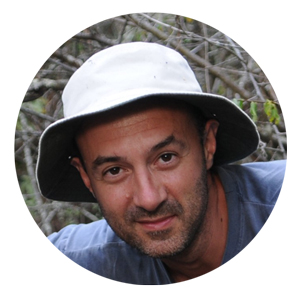
The Speaker
Claudio Ciofi obtained his PhD in the UK on the conservation genetics of wild Komodo dragons. He then moved to the United States for a first postdoctoral fellowship at the Smithsonian Institution and later to Yale University where he continued his research on Indonesian reptiles and started collaboration on the population genetics of giant Galápagos tortoises in Ecuador. Claudio is now associate professor in Ecology and Molecular Ecology at the University of Florence where he run a DNA sequencing facility and maintains international collaborations on the conservation biology of endangered species.
The Abstract
The Komodo dragon conservation project: Flores programme
Achmad Ariefiandy1, Deni Purwandana1, Tim S. Jessop2, Claudio Ciofi3
1 Komodo Survival Program, Bali Indonesia
2 New South Wales Department of Planning and Environment, Millers Point, NSW, Australia
3 Department of Biology, University of Florence, Sesto Fiorentino (FI), Italy
Multidisciplinary initiatives are crucial for effective conservation of rare and endangered taxa. The Komodo dragon Varanus komodoensis is the world’s largest lizard, a keystone and umbrella species for the protection of south-eastern Indonesian ecosystems. Yet, natural populations have been under considerable anthropogenic pressure over the last 40 years. We provide an updated overview of a multidisciplinary conservation programme conducted on the Island of Flores, off the boundaries of Komodo National Park. The Komodo Survival Program (KSP) initiative has so far contributed with comprehensive information on the biology of wild populations and provided important data for the management of captive stocks. Most of all, the Flores programme has a strong component of dissemination, community awareness, capacity building and sustainable development through the involvement of local community and governmental agencies. Mainly supported by the European Association of Zoos and Aquaria, KSP has received several awards for best practices and has mandate by the Indonesian Ministry of Environment and Forestry to work in close collaboration with local authorities for the protection of Komodo dragons and the Lesser Sunda Monsoon forest.
Achmad Ariefiandy1, Deni Purwandana1, Tim S. Jessop2, Claudio Ciofi3
1 Komodo Survival Program, Bali Indonesia
2 New South Wales Department of Planning and Environment, Millers Point, NSW, Australia
3 Department of Biology, University of Florence, Sesto Fiorentino (FI), Italy
Multidisciplinary initiatives are crucial for effective conservation of rare and endangered taxa. The Komodo dragon Varanus komodoensis is the world’s largest lizard, a keystone and umbrella species for the protection of south-eastern Indonesian ecosystems. Yet, natural populations have been under considerable anthropogenic pressure over the last 40 years. We provide an updated overview of a multidisciplinary conservation programme conducted on the Island of Flores, off the boundaries of Komodo National Park. The Komodo Survival Program (KSP) initiative has so far contributed with comprehensive information on the biology of wild populations and provided important data for the management of captive stocks. Most of all, the Flores programme has a strong component of dissemination, community awareness, capacity building and sustainable development through the involvement of local community and governmental agencies. Mainly supported by the European Association of Zoos and Aquaria, KSP has received several awards for best practices and has mandate by the Indonesian Ministry of Environment and Forestry to work in close collaboration with local authorities for the protection of Komodo dragons and the Lesser Sunda Monsoon forest.
MARCO SALVATORI

The Speaker
Marco Salvatori obtained a Ph.D. in Animal Ecology in 2023 at the University of Florence and he is currently a post-doctoral researcher in ecology and biodiversity monitoring with the University of Florence and MUSE - Science Museum of Trento. His research interests include wildlife ecology, biodiversity monitoring and conservation biology, with a focus on ecological modelling.
The Abstract
The effect of livestock on the snow leopard (Panthera uncia) and other mammals in the Mongolian Altai mountains
Marco Salvatori1,2 and Francesco Rovero1
1Department of Biology, University of Florence, Florence, Italy
2MUSE - Museo delle Scienze, Trento, Italy
Since 2015, the University of Florence is leading a research project in the Altai-Gobi mountains of Mongolia co-supported by ARCA Foundation and implemented by an alliance of international and Mongolian institutions. The main research focus is to determine the effect of free-ranging livestock on the distribution and abundance of larger mammals, with the IUCN-Vulnerable snow leopard (Panthera uncia) being the key species of interest. In Mongolia livestock keeping is the main livelihood activity and underwent an exponential growth due to the globalization of the cashmere market. While prior to our study the negative effect of livestock was clearly documented for wild herbivores as a form of competitive exclusion, the impact on the snow leopard and other mammals remained poorly understood. We used systematic camera trapping at 216 sites across four areas to detect livestock and wild mammals simultaneously and analyzed the data in occupancy frameworks that account for species interactions. We recorded a widespread presence of domestic animals in the four areas, including strictly protected ones, and observed avoidance of sites used by livestock by snow leopard and ibex (Capra sibirica). At the broader, community level, we found several statistically strong correlations in occupancy among species pairs, with the majority involving livestock. The sign of such associations was markedly species-dependent, yet larger species, including the snow leopard and Siberian ibex, avoiding livestock presence. Overall, our study suggests that livestock encroaching into protected areas influences the whole local community of wild mammals, with clear negative effects on snow leopards. Our results are relevant to design management strategies, such as: (1) protected area management should limit grazing especially in the core areas; (2) policies incorporating wildlife conservation into government subsidies to pastoralists should be envisaged; (3) as both wolves and snow leopards can prey on livestock, prevention techniques should be enacted to mitigate livestock depredation and conflicts.
Marco Salvatori1,2 and Francesco Rovero1
1Department of Biology, University of Florence, Florence, Italy
2MUSE - Museo delle Scienze, Trento, Italy
Since 2015, the University of Florence is leading a research project in the Altai-Gobi mountains of Mongolia co-supported by ARCA Foundation and implemented by an alliance of international and Mongolian institutions. The main research focus is to determine the effect of free-ranging livestock on the distribution and abundance of larger mammals, with the IUCN-Vulnerable snow leopard (Panthera uncia) being the key species of interest. In Mongolia livestock keeping is the main livelihood activity and underwent an exponential growth due to the globalization of the cashmere market. While prior to our study the negative effect of livestock was clearly documented for wild herbivores as a form of competitive exclusion, the impact on the snow leopard and other mammals remained poorly understood. We used systematic camera trapping at 216 sites across four areas to detect livestock and wild mammals simultaneously and analyzed the data in occupancy frameworks that account for species interactions. We recorded a widespread presence of domestic animals in the four areas, including strictly protected ones, and observed avoidance of sites used by livestock by snow leopard and ibex (Capra sibirica). At the broader, community level, we found several statistically strong correlations in occupancy among species pairs, with the majority involving livestock. The sign of such associations was markedly species-dependent, yet larger species, including the snow leopard and Siberian ibex, avoiding livestock presence. Overall, our study suggests that livestock encroaching into protected areas influences the whole local community of wild mammals, with clear negative effects on snow leopards. Our results are relevant to design management strategies, such as: (1) protected area management should limit grazing especially in the core areas; (2) policies incorporating wildlife conservation into government subsidies to pastoralists should be envisaged; (3) as both wolves and snow leopards can prey on livestock, prevention techniques should be enacted to mitigate livestock depredation and conflicts.
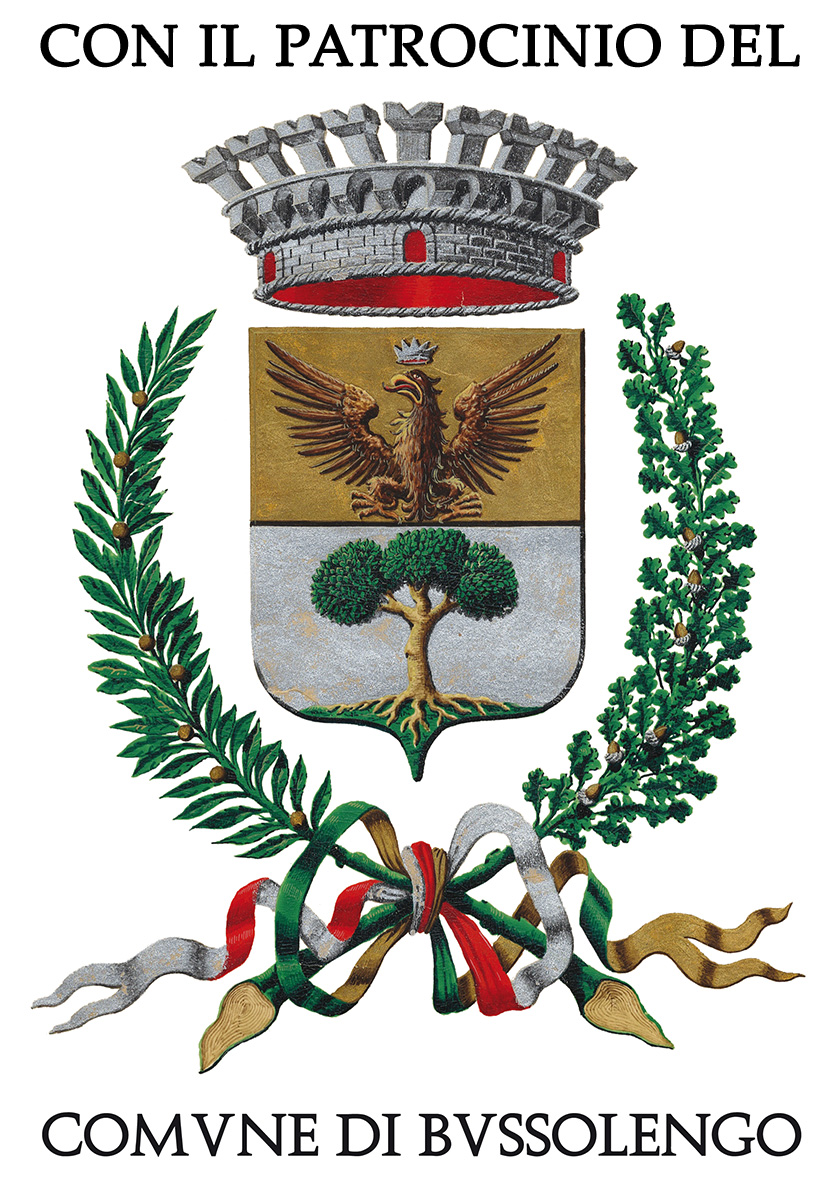
|
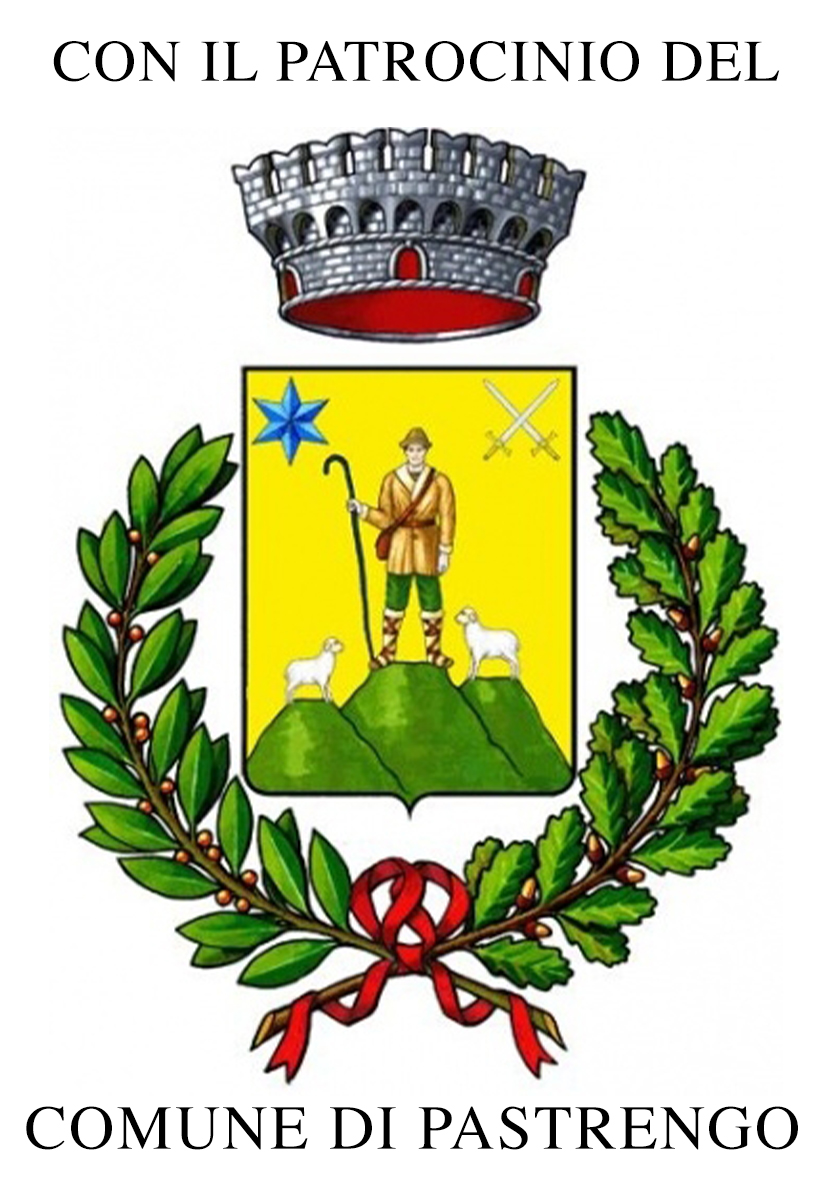 |
In collaborazione con:
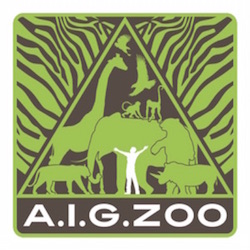 |
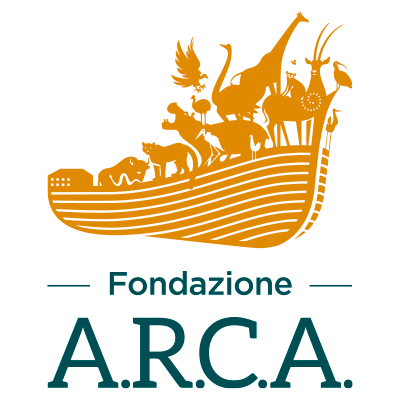 |
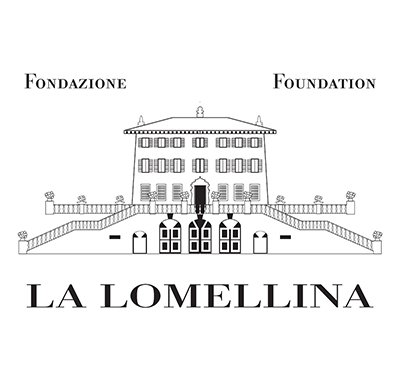 |
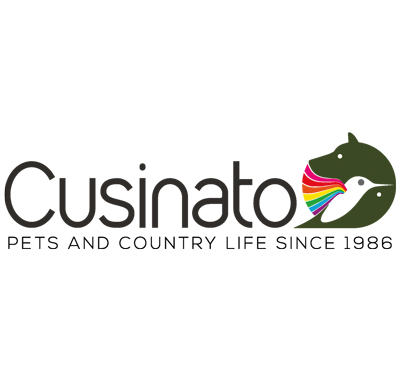 |
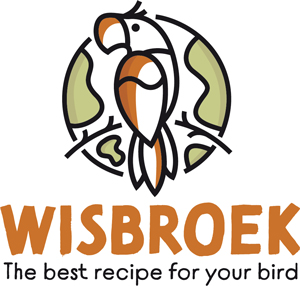 |
 Italiano
Italiano English
English Deutsch
Deutsch
